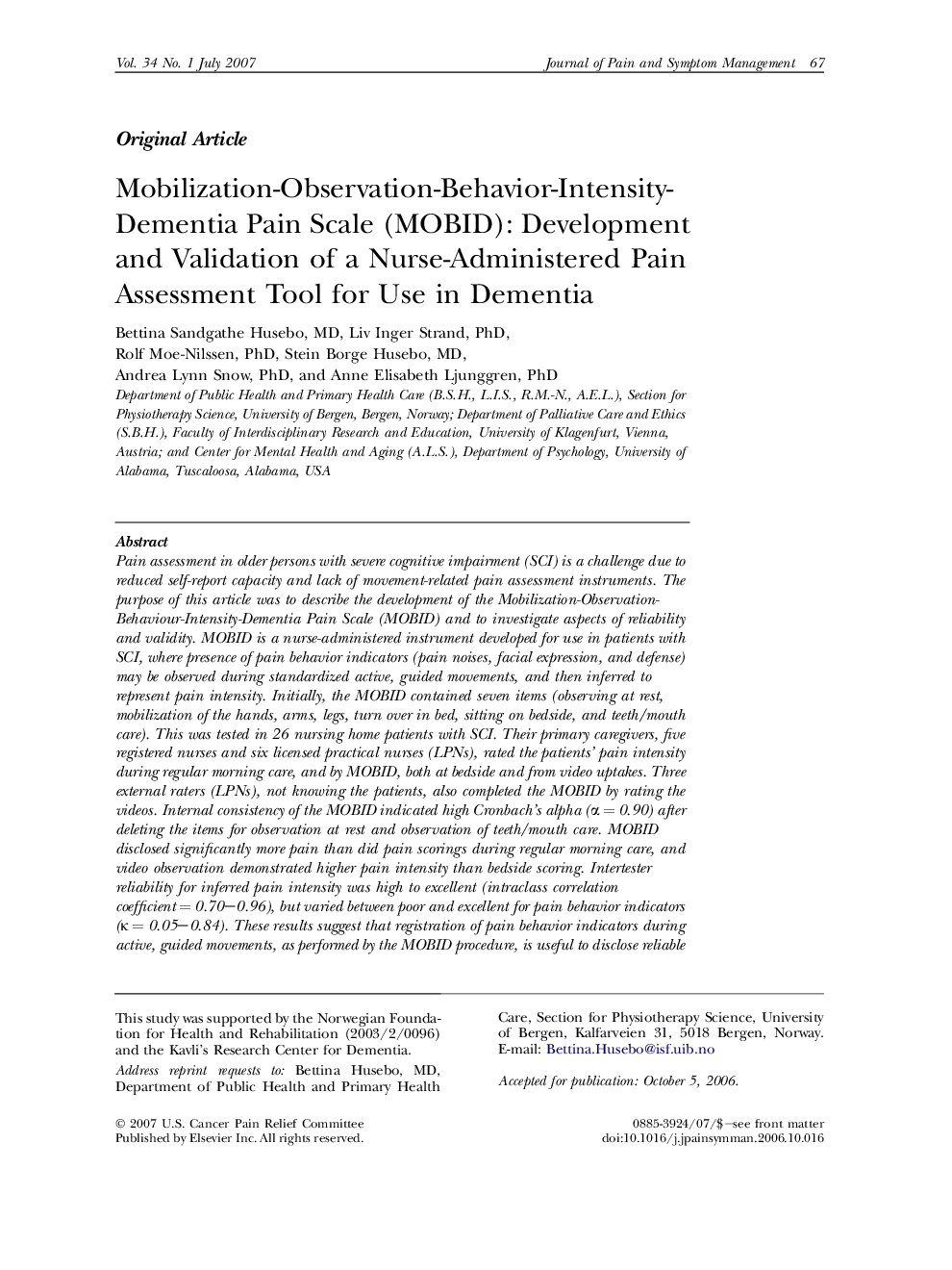| Article ID | Journal | Published Year | Pages | File Type |
|---|---|---|---|---|
| 2731100 | Journal of Pain and Symptom Management | 2007 | 14 Pages |
Pain assessment in older persons with severe cognitive impairment (SCI) is a challenge due to reduced self-report capacity and lack of movement-related pain assessment instruments. The purpose of this article was to describe the development of the Mobilization-Observation-Behaviour-Intensity-Dementia Pain Scale (MOBID) and to investigate aspects of reliability and validity. MOBID is a nurse-administered instrument developed for use in patients with SCI, where presence of pain behavior indicators (pain noises, facial expression, and defense) may be observed during standardized active, guided movements, and then inferred to represent pain intensity. Initially, the MOBID contained seven items (observing at rest, mobilization of the hands, arms, legs, turn over in bed, sitting on bedside, and teeth/mouth care). This was tested in 26 nursing home patients with SCI. Their primary caregivers, five registered nurses and six licensed practical nurses (LPNs), rated the patients' pain intensity during regular morning care, and by MOBID, both at bedside and from video uptakes. Three external raters (LPNs), not knowing the patients, also completed the MOBID by rating the videos. Internal consistency of the MOBID indicated high Cronbach's alpha (α = 0.90) after deleting the items for observation at rest and observation of teeth/mouth care. MOBID disclosed significantly more pain than did pain scorings during regular morning care, and video observation demonstrated higher pain intensity than bedside scoring. Intertester reliability for inferred pain intensity was high to excellent (intraclass correlation coefficient = 0.70–0.96), but varied between poor and excellent for pain behavior indicators (κ = 0.05–0.84). These results suggest that registration of pain behavior indicators during active, guided movements, as performed by the MOBID procedure, is useful to disclose reliable and valid pain intensity scores in patients with SCI.
